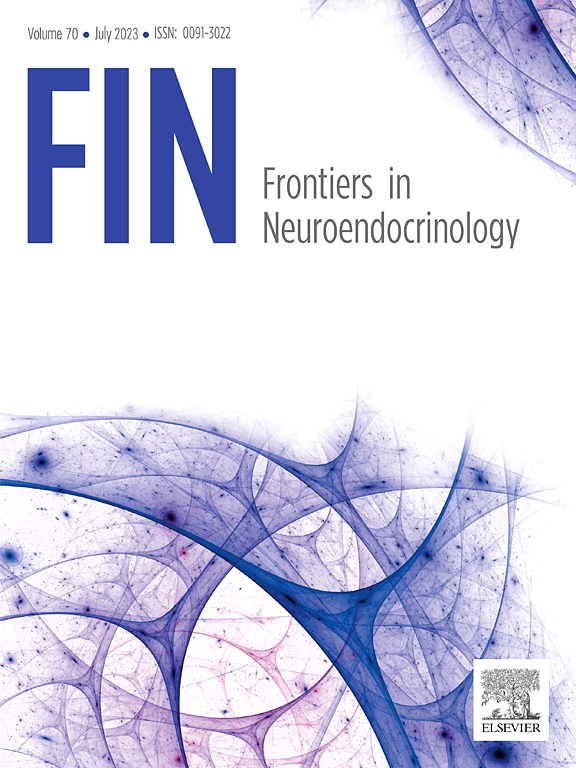Hormonal effects on externalizing problems in females across the lifespan
IF 6.7
1区 医学
Q1 ENDOCRINOLOGY & METABOLISM
引用次数: 0
Abstract
Developmental transdiagnostic externalizing problems—including harmful substance use, conduct issues, oppositional-defiance, and ADHD-related hyperactivity-impulsivity—have significant societal impacts, contributing to high costs in areas such as incarceration, delinquency, unemployment, and relationship challenges. These issues also exhibit notable sex differences: males tend to show higher prevalence, while females, though less affected overall, often face more severe outcomes. Despite these public health and personal costs, research on externalizing problems in females remains limited, particularly regarding the biological and hormonal factors driving these sex differences. The current paper explores how female hormonal influences across developmental stages may affect externalizing behaviors, highlighting the role ovarian hormones may play in shaping these externalizing problems. During puberty, estradiol and progesterone shifts contribute to risk-taking behaviors in females, who show distinct vulnerability patterns from males. Other important and understudied reproductive periods include puberty, pregnancy and postpartum, and perimenopause and menopause, and the menstrual cycle, overall. However, most population-level studies overlook the role of ovarian hormone fluctuations. This review advocates for the integration of hormonal phases in assessments, as hormonal shifts may exacerbate symptoms or modify treatment responses. Cycle-aligned interventions and hormone stabilization strategies could improve treatment outcomes, addressing gaps in male-focused treatment models and enhancing care for females with these disorders.
荷尔蒙对女性一生中外化问题的影响
发展的跨诊断外化问题——包括有害物质的使用、行为问题、对立违抗和adhd相关的多动冲动——具有重大的社会影响,在监禁、犯罪、失业和人际关系挑战等方面造成了高昂的代价。这些问题也表现出显著的性别差异:男性往往表现出更高的患病率,而女性虽然总体上受影响较小,但往往面临更严重的后果。尽管存在这些公共卫生和个人成本,但对女性外化问题的研究仍然有限,特别是关于造成这些性别差异的生物和激素因素的研究。本论文探讨了女性激素在发育阶段如何影响外化行为,强调了卵巢激素在形成这些外化问题中的作用。在青春期,雌二醇和黄体酮的变化有助于女性的冒险行为,女性表现出与男性截然不同的脆弱性模式。其他重要的和未被充分研究的生殖时期包括青春期,怀孕和产后,围绝经期和绝经期,以及月经周期。然而,大多数人口水平的研究忽略了卵巢激素波动的作用。这篇综述提倡在评估中整合激素阶段,因为激素变化可能会加重症状或改变治疗反应。周期一致的干预措施和激素稳定策略可以改善治疗结果,解决以男性为中心的治疗模式的差距,并加强对患有这些疾病的女性的护理。
本文章由计算机程序翻译,如有差异,请以英文原文为准。
求助全文
约1分钟内获得全文
求助全文
来源期刊

Frontiers in Neuroendocrinology
医学-内分泌学与代谢
CiteScore
13.30
自引率
6.80%
发文量
62
审稿时长
68 days
期刊介绍:
Frontiers in Neuroendocrinology (FIN) publishes a wide range of informative articles including comprehensive reviews, systematic reviews, opinion pieces, and meta-analyses. While the majority of reviews are invited, we also embrace unsolicited reviews and meta-analyses, as well as proposals for thematic special issues, provided they meet our rigorous quality standards. In addition, we encourage authors to submit commentaries that concisely present fresh ideas or offer further analysis to delve deeper into the implications of an article published in our journal.
 求助内容:
求助内容: 应助结果提醒方式:
应助结果提醒方式:


